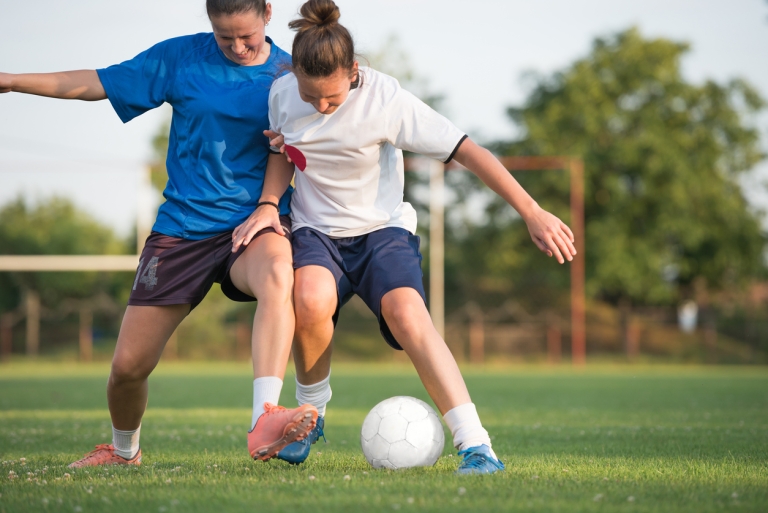5/3/23 blog post
the World Cup and women's knee injuries

in this article:
When the sports medicine world talks about knee injuries in women’s sports, the big elephant in the room is the ACL tear. Why? Because ACL tears require surgery to fix, and often 9-12 months of rehabilitation before return to full sports. This is an entire season of sports that is missed. In addition, once the ACL is torn, it is easier to tear again. Women’s soccer has an ACL tear rate higher than most other sports. I challenge you to find a high school soccer player who has not had a teammate tear her ACL. It is unfortunate when athletes have a severe injury at a young age. Can something be done about it? YES!
what is the ACL?
The ACL is one of 4 major ligaments in the knee. It stops the shin bone (tibia) from sliding forwards during knee movement. Without it, the knee joint is unstable and subject to even more injuries.
how is the ACL torn?
The ACL can be torn in two different ways. One is by a direct blow to the knee (like Ali Krieger’s injury here). The other is by landing or cutting incorrectly, causing the knee to twist, as seen in this example by female basketball player Rebecca Lobo. In medicine, we call this the plant/pivot injury. The plant/pivot injury is more common, especially in female athletes. Here is yet another video of how a simple misstep can cause an ACL tear . Athletes who tear the ACL usually report that part of their leg went one direction, and the rest of their leg didn’t. They felt or heard a pop, and then they were unable to walk. They have pain and swelling in the joint, and they are unable to completely straighten the leg. Sometimes they complain that the knee feels unstable.
why are female athletes at greater risk?
Years of research show that boys and girls jump and cut the same way until their early teens. Sometime during the early teens, puberty causes girls to change their mechanics. It may be due to a change in their center-of-gravity, or a change in their Q-angle (the angle created if you draw a line from the hips to the knees to the ankles). Whatever the cause, videos which show girls and boys performing sports maneuvers at this age clearly demonstrate that they do it differently. The mechanics the girls use puts them at higher risk of an ACL tear than their male counterparts.
Notice how this female athlete’s knees turn in as she lands from a jump.
what can be done to prevent ACL tears?
Research also shows that when athletes are retrained in how they cut, jump, and perform other sports maneuvers, their risk of tearing the ACL goes down. Programs such as Sports Metrics, offered at Dayton Children’s, does this. Unlike sports acceleration programs, which focus on sports performance, Sports Metrics focuses on correcting the mechanics which puts athletes at high risk for ACL tears. Although it is impossible to prevent all injuries, athletes who have successfully completed a program like Sports Metrics have a significantly lower number of ACL tears than those who do not.
who can benefit from ACL prevention programs?
Everyone can benefit from such a program. Female athletes participating in sports with a lot of jumping and cutting, such as soccer, volleyball, and basketball, are at the highest risk of having an ACL tear and would have the most benefit.




